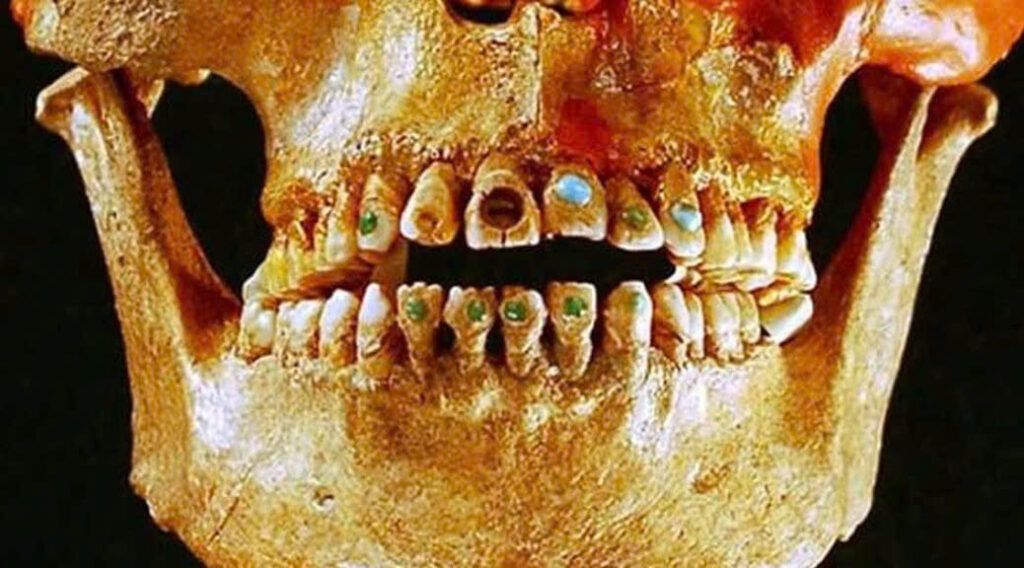Ancient Secrets Revealed

Archaeologists have uncovered the skeleton of a high-status woman, dating back 1,600 years, near the ancient ruins of Teotihuacan, Mexico. This remarkable find has shed light on fascinating cultural practices of the time, including skull deformation and intricate dental modifications.
A Unique Burial
The woman, who was between 35 and 40 years old at the time of her death, was laid to rest with 19 ceremonial jars, as reported by the National Anthropology and History Institute. These offerings highlight her elevated status within the society of ancient Teotihuacan.

Her skull showed signs of intentional elongation, a practice commonly observed in southern Mesoamerica, rather than in the central region where she was found. This extreme cranial modification reflects the cultural norms of her lineage.
The Art of Cosmetic Dentistry

Adding to the intrigue, the woman’s teeth were adorned with two round pyrite stones embedded in her front teeth. This practice, popular among the nobility in the Maya regions, illustrates the advanced cosmetic dentistry techniques of the time. The Maya were known for their expertise in dental decoration, using precious stones and intricate carvings to enhance their smiles.
Dentists of this era possessed an impressive understanding of tooth anatomy, allowing them to drill into teeth without damaging the delicate pulp. They utilized natural resins, mixed with chemicals and crushed bones, as adhesives to attach ornamental stones like jade.
Video
Mysteries Beneath Teotihuacan
In a related discovery, archaeologists found liquid mercury in a subterranean tunnel beneath the Temple of the Feathered Serpent. This finding may indicate an underworld river leading to royal tombs, potentially housing the remains of Teotihuacan’s powerful rulers—whose final resting places have yet to be identified.
Uncovering these royal tombs would be monumental, providing invaluable insights into the mysteries of this ancient civilization.
The Legacy of Teotihuacan

The enigmatic city of Teotihuacan, located about 50 kilometers (30 miles) north of Mexico City, flourished between the first and eighth centuries before its civilization mysteriously disappeared. Today, its iconic Sun and Moon pyramids continue to attract tourists, standing as enduring symbols of a once-great civilization.
As research continues, each new discovery offers a deeper understanding of the rich history and cultural significance of Teotihuacan and its people.

